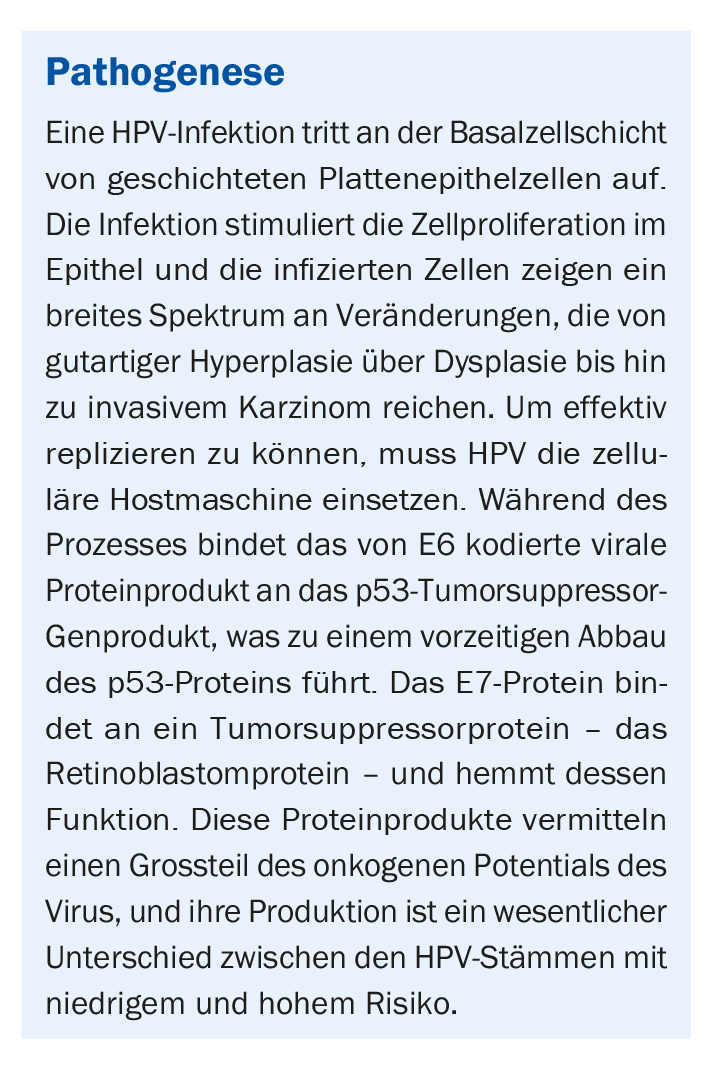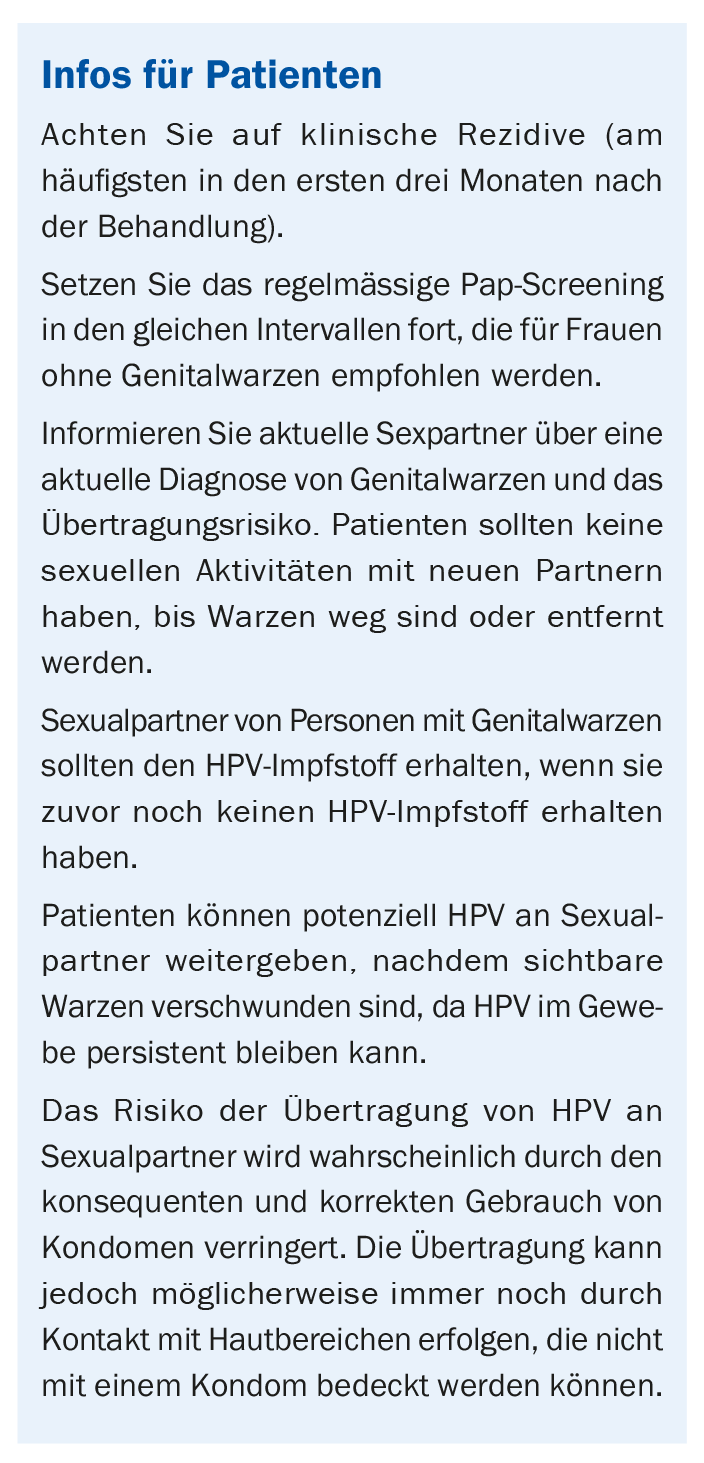Human papillomaviruses are sexually transmitted and are responsible for the development of various cancers in the genital area, especially cervical cancer. Vaccination can protect against infection with important types of viruses – girls and boys.
Human papillomavirus (HPV) is one of the most common sexually transmitted infections. More than 170 HPV types have been classified and more than 40 HPV types can infect the human genital tract. Genital HPV types are divided into two groups depending on whether they are associated with cancer: Infections with low-risk types are not associated with cancer but can cause genital warts and benign or low-grade cervical cell changes. Infections with high-risk types, especially HPV types 16 and 18, can cause low-grade cervical cell lesions, high-grade cervical cell lesions (moderate to severe Pap test abnormalities), and cancer of the cervix. In addition, some high-risk HPV types have been associated with cancers of the vulva, vagina, anus, penis, and oropharynx.

Asymptomatic or subclinical
Available HPV-related data focus mainly on cases of HPV infection with clinical sequelae, such as genital warts and urogenital cancer. However, the majority of HPV infections are asymptomatic or subclinical and therefore undiagnosed, regardless of whether they are caused by low- or high-risk types. Especially in immunocompetent individuals, most HPV infections have no clinical consequences. It is estimated that most sexually active men and women will acquire a genital HPV infection at some point in their lives, but about 90% of these infections are clinically silent and most infections resolve spontaneously.
The three most common clinically significant manifestations associated with HPV infection are anogenital warts, cervical cellular abnormalities (or lesions detected by Pap test or enhanced visual inspection methods), and anal cancer in men who have sex with men. A minority of patients with cellular abnormalities later develop into cervical cancer, which may not be visible on visual examination at an early stage but may manifest later as a cervical irregularity or mass.

Risk factors
Key risk factors associated with acquiring genital HPV infection include a higher number of sexual partners and a lower level of education.
In relation to cervical cancer, researchers have examined several possible risk factors, including oral contraceptives, multiple pregnancies, tobacco smoking, diet (vitamins C and E, carotenoids), immunosuppression, previous herpes simplex virus 2 infection, or Chlamydia trachomatis infection. These factors may play a minor role in progression to cervical cancer, but none of them consistently show the same strength of association as high-risk HPV infection.
The HPV types that infect humans have known specificity for epithelial sites. Genital HPV types have a specific affinity for genital skin and mucosa. Identification and typing of HPV in tissues is performed by detection of HPV DNA or mRNA. Infection with HPV is characterized by low-risk (nononcogenic types) and high-risk (oncogenic types).

Clinical manifestations at a glance
Anogenital warts: Patients with visible anogenital warts are often infected with multiple HPV types simultaneously. Anogenital warts have four main morphologic types:
- Condylomata acuminata (cauliflower-like appearance and may be skin-colored, pink, or hyperpigmented)
- Smooth papules (usually dome-shaped and skin-colored)
- Flat papules (macular to slightly raised, skin-colored, smooth surface)
- Keratotic warts (with a thick keratinized layer resembling common warts or seborrheic keratoses).
Cervical dysplasia: Cervical dysplasia may be evident on physical examination with visual examination of the cervix, but cervical cellular abnormalities are usually subclinical. Lesions associated with these abnormalities can be detected by Pap test or by colposcopy with or without biopsy of the lesion. Histology of a biopsy is used to confirm and stage cervical intraepithelial neoplasia (CIN). Low-grade cervical cell abnormalities often regress spontaneously without treatment. Even high-grade CIN may regress without treatment, especially in younger women (21-24 years).
Anal dysplasia: Anal dysplasia consists of premalignant cellular changes similar in nature to those seen in cervical dysplasia. The diagnosis is made on the basis of a biopsy of anal tissue, typically after high-resolution anoscopy. Patients with anonymous dysplasia usually have no symptoms and are clinically unremarkable (by standard anoscopy and digital anorectal examination). Some patients describe anal pain, bleeding, or pruritus.
Anogenital cancer: more than 90% of cervical and anal cancers are caused by HPV, and HPV infection is related to about 70% of vulvar, vaginal, and oropharyngeal cancers. As precancerous lesions progress to malignancy, the cervix or anal epithelium may become abnormal, resulting in severe erosion, bleeding, ulceration, or mass. These abnormalities may extend from the cervix to the vaginal mucosa or reveal tumor erosion in nearby tissue. Bimanual pelvic examination results may reveal local metastatic involvement. Anorectal examination (via digital anorectal examination and anoscopy) may reveal an external or internal mass with or without heavy blood due to tumor erosion.
Vaccination recommendations
Since 2007, vaccination against human papillomavirus (HPV) has been recommended in Switzerland as a basic vaccination for girls and young women to prevent cervical cancer and other diseases caused by HPV. The FOPH and the ECIF now also recommend vaccination for boys and men aged 11 to 26 years, ideally before the start of sexual activity.
Females: Vaccination against cervical cancer and other diseases caused by HP viruses is recommended for all female adolescents between the ages of 11 and 14 (before their 15th birthday). A booster vaccination (three doses) can be given to all young women between the ages of 15 and 19 who have not yet received a vaccination, even if they have already had sexual relations. In individual cases, vaccination is also indicated in young women between 20 and 26 years of age. However, the probability of still benefiting from vaccination decreases the higher the risk of already being infected, i.e. especially in women with frequently changing sexual partners. HPV vaccination for young women aged 11 to 26 is covered by compulsory health insurance if the vaccinations are part of cantonal vaccination programs.
Men: Vaccination against genital cancer and other diseases caused by the HPV virus is recommended for boys between 11 and 14 years of age. Before the 15th birthday, two doses are enough. Booster vaccination is recommended for all young men between the ages of 15 and 19 (before their 20th birthday) who have not yet been vaccinated and wish to protect themselves. In individual cases, vaccination is also recommended in young men between 20 and 26
years indicated.
Literature:
- Centers for Disease Control and Prevention: Human Papillomavirus (HPV) Treatment and Care, www.cdc.gov/std/hpv/treatment.htm, last accessed Feb. 22, 2019.
- INFOVAC: The Information Platform for Immunization Issues, www.infovac.ch, last accessed February 22, 2019.
- Cantonal Human Papillomavirus (HPV) Vaccination Program, www.ag.ch/de/dgs/gesundheit/gesundheitsfoerderungpraevention/impfen/impfprogramm_hpv/kantonalesimpfprogrammhpv.jsp, last accessed Feb. 22, 2019.
HAUSARZT PRAXIS 2019; 14(3): 42-44












